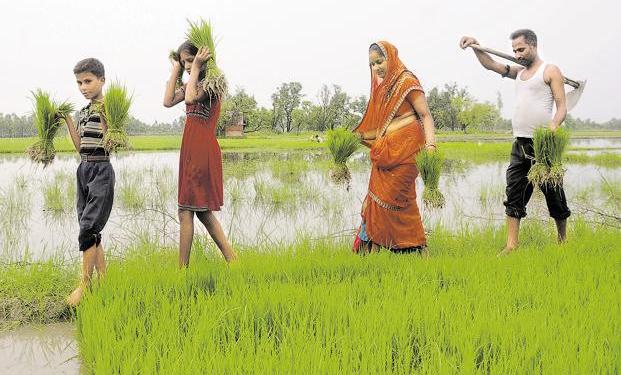The BJP manifesto has promised to revive the farming and rural sector of the country. It makes a promise of investing 25 lakh crore rupees in the rural sector. The party also promised interest free loans to farmers of the country. “We will further expand the coverage of the scheme to all the farmers in the country,” said the BJP manifesto. The manifesto also stated, “We will launch a pension scheme for all small and marginal farmers in the country so as to ensure social security to them on reaching 60 years of age.” A National Warehousing Grid along National Highways to ensure necessary logistical linkages for warehousing of agricultural produce has also been among the initiatives taken up by the party.
arlier in budget, The Modi government will transfer a direct benefit of 6,000 rupees per year for landholders up to 2 hectares. The total amount allocated to this scheme named Pradhan Mantri Samman Nidhi is 75,000 crore rupees for the year 2019-20. This will be implemented retrospectively from December 1, 2018. Therefore every farmer with 2 hectares of land will get 6000 rupees from Modi government at the very beginning of this fiscal year. The government plan includes free crop insurance and alteration of credit schemes. The amount of loan which a farmer could avail through Kisan Credit Card has been doubled.
In a farmer rally in Uttar Pradesh, PM Modi announced that government aims to double farmer’s income by 2022. The Centre formed an 8 member inter-ministerial committee under Ashok Dalwai, Additional secretary at the Union Agriculture Ministry to suggest steps to double farmer’s income. After the formation of the committee, the government took various steps on its suggestions to solve farmer’s distress. In June 2016, PradhanMantriFasalBimaYojna (PMFBY) was rolled out to insure crops. The insurance scheme made farming as secure as any other profession. If crop suffers due to any reason like drought, excessive rain etc., insurers will pay the output price. To provide irrigation facilities to farmers across the country, PM Modi launched PradhanMantriKrishiSinchaiYojana (PMKSY) and pumped money into the National Bank for Agriculture and Rural Development (NABARD) to increase credit penetration to farmers. The steps taken by the government coupled with good monsoon proved beneficial for agriculture and the sector grew at 6.3 percent in 2016-17. However, growth moderated to 3 percent in 2017-18 due to the high base effect. In the first quarter of this financial year, agricultural growth was 5.3 percent compared to 3 percent in the same period of last year.
The government is trying to solve the post-production problem through incentivizing exports. As India produces more than it consumes, the price of agriculture produces crashes and this could not be solved without encouraging exports. The Government plans to introduce country-specific special agricultural produce zones to boost agricultural exports. The exports are already rising, in the FY 2018, the country exported agricultural commodities worth $ 38.74 billion, as against imports of $ 24.89 billion which resulted in a farm trade surplus of $ 13.85 billion. The surplus for 2016-17 and 2015-16 was $ 8.05 billion and $ 10.23 billion respectively.































